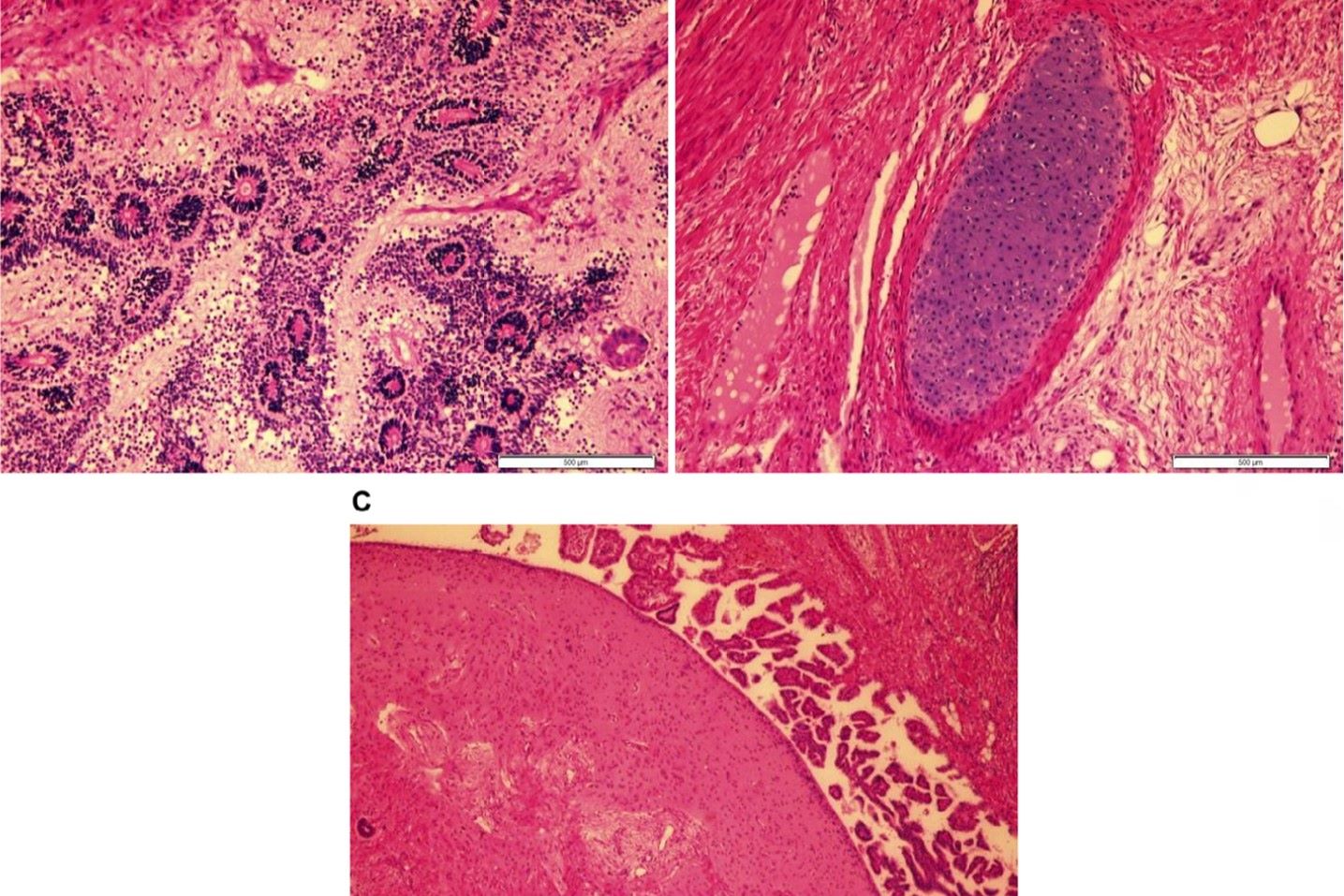
Growing Teratoma Syndrome (GTS) is a rare condition that can puzzle even seasoned doctors. Imagine a tumor that, instead of shrinking with treatment, actually grows larger. This happens when a malignant germ cell tumor transforms into a benign teratoma. While the new growth is non-cancerous, its increasing size can cause serious health issues. GTS often appears after chemotherapy, making it tricky to diagnose. Understanding this syndrome is crucial for proper treatment and management. In this post, we’ll explore 22 intriguing facts about Growing Teratoma Syndrome to help you grasp its complexities and implications. Ready to dive in? Let’s get started!
Key Takeaways:
- Growing Teratoma Syndrome (GTS) is a rare condition where tumors continue to grow despite treatment but transform into benign teratomas. It primarily affects young adults and is more common in males.
- GTS can cause symptoms like abdominal pain and respiratory issues, and is usually diagnosed through imaging and blood tests. Surgery is the main treatment, and the prognosis is generally good with high long-term survival rates.
What is Growing Teratoma Syndrome?
Growing Teratoma Syndrome (GTS) is a rare condition that occurs in patients with germ cell tumors. Despite chemotherapy, these tumors continue to grow but transform into benign teratomas. This phenomenon is fascinating and complex.
-
GTS was first described in 1982 by Logothetis and colleagues. They observed that some patients' tumors grew despite treatment but turned benign.
-
GTS primarily affects young adults, typically between 20 and 40 years old. This age group is most likely to develop germ cell tumors.
-
The syndrome is more common in males. Testicular germ cell tumors are the most frequent origin of GTS.
-
GTS can also occur in females, usually originating from ovarian germ cell tumors. However, it is less common in women.
Symptoms and Diagnosis of GTS
Recognizing GTS involves understanding its symptoms and diagnostic criteria. These can be subtle and often require careful medical evaluation.
-
Symptoms of GTS include abdominal pain, a palpable mass, and sometimes respiratory issues if the tumor presses on the lungs.
-
Diagnosis often involves imaging techniques like CT scans or MRIs. These help visualize the tumor's growth and transformation.
-
Blood tests measuring tumor markers like AFP and HCG are crucial. In GTS, these markers typically normalize despite tumor growth.
-
Biopsy is sometimes necessary to confirm the diagnosis. It helps differentiate between malignant and benign tissue.
Treatment Options for GTS
Managing GTS requires a combination of surgical and medical approaches. Treatment aims to remove the benign tumor and prevent complications.
-
Surgery is the primary treatment for GTS. Removing the tumor can alleviate symptoms and prevent further growth.
-
Chemotherapy is usually ineffective against GTS. The benign nature of the tumor makes it resistant to such treatments.
-
Regular follow-up is essential. Monitoring for recurrence or new tumor growth helps manage the condition effectively.
-
Multidisciplinary teams often handle GTS cases. Surgeons, oncologists, and radiologists work together to provide comprehensive care.
Prognosis and Outcomes of GTS
Understanding the prognosis and potential outcomes of GTS helps patients and doctors make informed decisions about treatment and management.
-
The prognosis for GTS is generally good. Most patients recover well after surgical removal of the tumor.
-
Recurrence is possible but rare. Regular monitoring helps detect any new growth early.
-
Long-term survival rates are high. Patients often lead normal lives post-treatment.
-
Complications can arise if the tumor grows in critical areas. Surgery in such cases can be more complex and risky.
Interesting Facts About GTS
Here are some intriguing aspects of GTS that highlight its unique nature and the challenges it presents.
-
GTS can occur in various parts of the body. While most common in the abdomen, it can also appear in the chest or brain.
-
The exact cause of GTS is still unknown. Researchers continue to study why some tumors transform into benign teratomas.
-
GTS is sometimes referred to as "growing teratoma phenomenon." This alternate name emphasizes the tumor's growth despite treatment.
-
The benign tumors in GTS can contain different types of tissue. These can include hair, muscle, and even teeth.
-
GTS is a rare condition. Its rarity makes it a subject of interest and study in medical research.
-
Awareness of GTS is crucial for early diagnosis and treatment. Educating both patients and healthcare providers can improve outcomes.
Final Thoughts on Growing Teratoma Syndrome
Growing Teratoma Syndrome (GTS) is a rare but significant condition that demands attention. Understanding its symptoms, diagnosis, and treatment options can make a world of difference for those affected. GTS often follows chemotherapy for germ cell tumors, presenting unique challenges for patients and doctors alike. Early detection and surgical intervention are crucial in managing this syndrome effectively.
Awareness and education about GTS can lead to better outcomes and improved quality of life. By staying informed, patients and their families can navigate this complex condition with greater confidence. Remember, knowledge is power when dealing with rare medical conditions like GTS. Stay proactive, consult healthcare professionals, and support ongoing research to help those affected by this syndrome.
Frequently Asked Questions
Was this page helpful?
Our commitment to delivering trustworthy and engaging content is at the heart of what we do. Each fact on our site is contributed by real users like you, bringing a wealth of diverse insights and information. To ensure the highest standards of accuracy and reliability, our dedicated editors meticulously review each submission. This process guarantees that the facts we share are not only fascinating but also credible. Trust in our commitment to quality and authenticity as you explore and learn with us.
